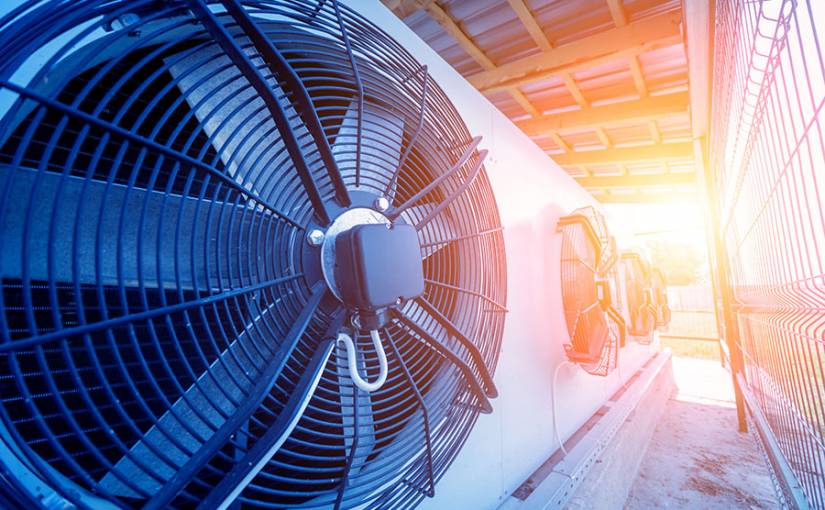For several years now, the internet of things (IoT) devices have been slowly working their way into homes all around the world. In most cases, this has taken the form of smart speakers, connected thermostats, and various smart plugs that turn ordinary household devices into IoT-controlled digital appliances. Here is how IoT has quietly taken over the commercial HVAV industry.
All ordinary household devices that are “smart” is a major reason why such things are so closely identified with the IoT revolution by members of the general public.
In truth, however, household IoT solutions aren’t expected to have the biggest overall impact on the way we live. Instead, IoT experts constantly point to IoT forming the core of so-called ‘smart cities’ that will allow local governments and city planners to exercise unprecedented control over the environment within them.
Connected Cities
For example, future connected cities will feature real-time traffic management systems that will be interoperable with autonomous vehicles. They will be powered by next-generation smart electrical grid systems that precisely deliver power to where it’s needed in the most efficient manner possible.
They’ll have a shared transportation infrastructure that lets citizens get around at will without having to worry about bringing a vehicle along each day. All in all, it’s a promise of an exciting future indeed.
But for all of the noise that proponents of IoT-driven smart cities have made recently, there’s still precious little evidence of the technology actually making its way into real, functioning cities.
Aside from a handful of test locations, it’s difficult to find many visible examples of large-scale IoT systems out in the wild – unless you take a look inside the mechanical rooms of most commercial buildings.
In those spaces, IoT has quietly revolutionized the way building owners heat and cool their properties. Here’s a look at how IoT has taken over the commercial HVAC industry and the benefits it has enabled.
Comfort at a Distance
Believe it or not, the rapid adoption of IoT in commercial HVAC installations happened in large part due to the efforts of companies like Nest and Ecobee on the consumer side of the market.
The fact that connected thermostats have become so common in people’s homes has led to an expectation of similar functionality in commercial installations. As a result, there was finally momentum to bring IoT technologies into the market.
And this is particularly notable due to what the IoT tech was replacing. After all, it wasn’t all that long ago that most commercial HVAC systems relied on dial-up direct access for remote control and maintenance functions.
Aside from being an outdated, inconvenient, and limited way to handle things, it also meant that most building owners still had to rely on 3rd-party vendors to manage conditions at their properties.
Needless to say, gaining direct, on-the-go control over on-site HVAC systems played a huge role in how willing commercial property owners were to spend what was necessary to upgrade to IoT-enabled systems.
Efficiency at Scale
Once they made the leap to IoT technology, they didn’t stop with remote access. In short order, HVAC installations started making use of IoT technology in other areas, too.
They started to include vibration and pressure sensors that can help detect the earliest signs of component failure. They began integrating occupancy sensors and motorized ducting controls that allow precise airflow redirection toward crowded areas and away from empty rooms.
They even began to utilize socially-driven control systems that allow occupants to have a hand in setting the temperature in the spaces they occupy.
As you might expect, the gains to the overall efficiency of operating an IoT-enabled HVAC system are significant.
By allowing the system to respond in real-time to the comfort needs of occupants, and by detecting trouble before a failure can occur, building operators spend less money on electricity and preventative maintenance and realize significant ROI on the hardware they’re putting into the building.
And they also gain some useful and significant safety benefits, as well.
In the Air
As it turns out, the ubiquity of ductwork connected to a building’s HVAC system also makes for a built-in building safety infrastructure.
To that end, many commercial HVAC systems now include IoT smoke detection sensors that can pinpoint potential fires with greater accuracy than individual open-air smoke detectors.
In some advanced installations, an array of sensors also monitors indoor air quality in real-time to make sure that the building remains safe and healthy for its occupants – and takes action to vent any particulate matter that could be problematic.
Since the monitoring and improving environmental quality is a primary goal of the smart city of tomorrow, such sensor networks are a big step forward that not many people have even noticed.
When paired with things like UV air sanitization light, volatile organic compound (VOC) detectors, and HEPA-quality filtration, today’s commercial buildings are already coming closer to providing indoor environments that will keep occupants healthy and safe to a greater degree than was ever possible before.
What’s Coming Next
Although the rapid introduction of IoT technologies into commercial HVAC systems has flown under the radar, it’s a critical step forward in the drive to build the connected smart cities of tomorrow.
And, there are even more important steps forward the industry is poised to take. One of those steps is the integration of artificial intelligence (AI) into the control hardware that manages the systems themselves.
As that happens, facilities managers and business owners will get something close to a set-it-and-forget-it management experience, which will increase efficiency and drive costs down even further.
Air Quality
And there’s more coming on the air quality front, too. Following on some large-scale studies that have found that it’s possible to detect airborne viruses in a building’s HVAC filtration systems, there’s also some movement toward developing IoT sensors that can do that job in real-time.
With the current coronavirus (COVID-19) pandemic still ongoing and building owners coming to realize the challenges of operating facilities that might have to contend with sudden viral outbreaks, that’s no small thing.
At a higher level, of course, the deployment of such varied sensor networks in buildings has even more promise. As smart electrical grid technologies start making their debut in cities around the world, IoT enabled HVAC systems will be able to send usage feedback to generation stations to provide insight into usage patterns on a minute-to-minute basis.
And since HVAC operation accounts for around 40% of a building’s energy usage on average, that’s going to be a valuable data stream to help minimize waste (and therefore pollution) at a macro-level.
The Bottom Line
All of these advances offer just a small glimpse of IoT’s transformative power.
In only a few short years, it has revolutionized the commercial HVAC industry and is continuing to make new, previously impossible functionality available at a rapid pace. And, it’s doing so in a way that’s having a very real effect on the lives of millions of people, even if they have no idea that it’s there.
While IoT continues its march into homes around the world, the technology’s integration into commercial HVAC systems stands as a useful example of IoT in mass action for smart city proponents everywhere.
And it’s also building a technology infrastructure that will help stitch buildings together into the very kinds of connected environments that those tech evangelists foresee.
Oh, and keeping us all cool in the summer and warm in the winter’s still a pretty neat trick, too.










